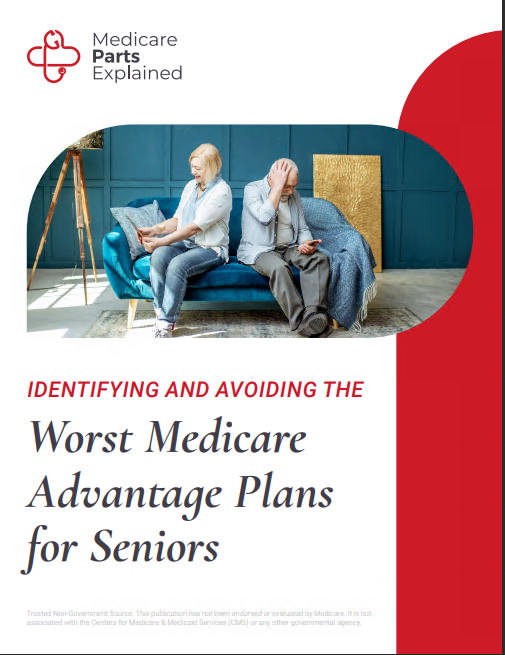Key Takeaways
-
While Medicare offers essential health coverage in retirement, it doesn’t eliminate out-of-pocket costs. You’re still responsible for premiums, deductibles, copayments, coinsurance, and limits on services.
-
In 2025, new cost-sharing rules and drug caps aim to improve affordability, but gaps in coverage still leave many retirees financially exposed without careful planning.
The Real Cost of “Affordable” Medicare in Retirement
Medicare often gets praised as a safety net for retirees, and it is an important one. But it’s easy to get lulled into a false sense of financial security. What surprises many retirees is how much they still have to pay out-of-pocket, even with Medicare coverage. You’re not alone if the bills keep catching you off guard.
Understanding the Building Blocks of Medicare
Before diving into where the hidden costs come in, it’s helpful to understand how Medicare is structured. Original Medicare includes:
-
Part A (Hospital Insurance): Covers inpatient hospital stays, skilled nursing facility care, hospice, and some home health care.
-
Part B (Medical Insurance): Covers outpatient services, doctor visits, preventive care, mental health, and durable medical equipment.
-
Part D (Prescription Drug Coverage): Covers prescription medications through stand-alone plans or integrated coverage under Medicare Advantage.
-
Medicare Advantage (Part C): Offers an alternative way to get Part A and Part B benefits, sometimes with extra benefits.
Each part comes with its own premium, deductible, and cost-sharing rules, which can stack up quickly.
You May Not Pay Premiums for Part A, But It’s Not Free
If you or your spouse paid Medicare taxes for at least 40 quarters (10 years), you don’t pay a monthly premium for Part A. But that doesn’t mean Part A is free.
-
In 2025, the Part A hospital deductible is $1,676 per benefit period.
-
After 60 days in the hospital, daily coinsurance kicks in, starting at $419 per day.
-
Skilled nursing facility care has its own coinsurance after 20 days, at $209.50 per day through day 100.
These numbers can add up fast if you have multiple hospitalizations or extended care needs in a year.
The Real Bite Comes from Part B Premiums and Cost-Sharing
Part B always requires a premium. In 2025, the standard Part B premium is $185 per month. If your income is above a certain threshold, you’ll pay more through IRMAA (Income-Related Monthly Adjustment Amounts).
But the costs don’t stop at the premium:
-
You pay a $257 annual deductible before coverage kicks in.
-
Then, Medicare pays 80% of approved costs. You’re on the hook for the remaining 20% with no annual out-of-pocket limit.
That 20% can be substantial if you need frequent outpatient care, specialist visits, surgeries, or durable medical equipment.
Prescription Drug Coverage Can Be a Financial Rollercoaster
Part D helps cover prescription drugs, but it still leaves retirees with significant cost exposure. In 2025, some good news came in the form of a $2,000 annual cap on out-of-pocket costs for covered prescription drugs.
Even with this improvement:
-
You’ll still pay monthly premiums, which vary by plan and income level.
-
Plans often charge tiered copayments or coinsurance.
-
The deductible can be as high as $590 in 2025.
Without drug coverage, the cost of managing chronic conditions like diabetes, heart disease, or arthritis can become overwhelming.
No Out-of-Pocket Maximum with Original Medicare
One of the biggest financial pitfalls of Original Medicare is the absence of an out-of-pocket maximum. That means there’s no upper limit to how much you might pay in a year if you have a serious illness or accident.
While some Medicare Advantage plans include annual out-of-pocket limits (as required by law), those limits only apply to covered services within the plan’s network. Original Medicare offers no such protection unless you purchase additional coverage.
Medicare Supplement Plans Help, But They Cost More
Many retirees choose to buy a Medigap (Medicare Supplement) plan to cover some or most of the out-of-pocket costs Original Medicare leaves behind. These plans pay for:
-
Part A and B coinsurance
-
Part A hospital deductible
-
Excess charges from non-participating providers
However, Medigap premiums are paid in addition to your Part B (and Part D) premiums. And they do not cover:
-
Prescription drugs (you’ll still need a Part D plan)
-
Long-term care
-
Vision or dental
In short, you can lower your cost risk, but it means taking on another monthly premium.
Medicare Advantage Plans Are Not Always Cheaper
Medicare Advantage (Part C) plans sometimes appear to offer broader coverage with low premiums. But they come with their own trade-offs:
-
Copayments and coinsurance for every service, which can vary widely.
-
Limited provider networks, meaning your doctors may not participate.
-
Prior authorizations for many services.
-
Annual out-of-pocket maximums, but they can be as high as $9,350 in 2025 for in-network services.
So while upfront costs may seem lower, your actual spending can vary based on your health, provider availability, and service frequency.
Services Medicare Doesn’t Cover That Still Cost You
Even with Medicare, you’re responsible for the full cost of many services unless you arrange supplemental coverage:
-
Dental care
-
Hearing aids and exams
-
Routine eye exams and eyeglasses
-
Over-the-counter drugs
-
Long-term custodial care (such as help with bathing, dressing, or meal prep)
These aren’t fringe needs; they become more common with age. Paying out-of-pocket for these services can catch you off guard if you haven’t budgeted accordingly.
Medical Inflation Doesn’t Stop at Age 65
Healthcare costs tend to rise each year due to inflation, and Medicare cost-sharing amounts are no exception. From year to year, you’ll see increases in:
-
Premiums
-
Deductibles
-
Coinsurance and copayments
For example, the Part B premium increased in 2025 compared to 2024. So did the Part D deductible. These changes reflect inflation and increasing healthcare utilization. Planning for these cost increases should be part of your long-term retirement strategy.
Your Income May Affect What You Pay
Medicare premiums aren’t one-size-fits-all. If your modified adjusted gross income (MAGI) exceeds certain thresholds, you’ll pay more for both Part B and Part D. This adjustment is known as IRMAA.
For 2025, IRMAA surcharges apply if your income (from 2023 tax returns) is over:
-
$106,000 (individual)
-
$212,000 (married filing jointly)
This means even middle-income retirees can face premium hikes simply because of prior earnings or withdrawals from tax-deferred retirement accounts.
You Need a Strategy for Medicare Costs
Getting the most out of Medicare isn’t just about choosing a plan. It’s about understanding how different parts work together, what’s covered, and what isn’t. It also means planning ahead for the costs that can’t be avoided.
Here are a few things you can do:
-
Estimate your total annual Medicare costs, including premiums, deductibles, copays, and any supplemental coverage.
-
Budget for uncovered services, especially dental, vision, hearing, and long-term care.
-
Consider your income trajectory, and how it may affect IRMAA charges.
-
Review your plan options every year during Medicare Open Enrollment (October 15 to December 7).
-
Talk to a licensed agent to explore cost-saving strategies tailored to your needs.
Don’t Let Surprise Bills Disrupt Your Retirement
Medicare helps millions of Americans access vital healthcare in retirement. But it’s not a silver bullet. You still need to be aware of the premiums, deductibles, and coverage limits that affect your wallet. What looks affordable at first can easily turn into a budgeting nightmare without a clear understanding of what Medicare truly covers and what it doesn’t.
If you’ve been surprised by how much Medicare has cost you—or if you’re nearing eligibility—it’s time to take a deeper look. The earlier you start planning, the better positioned you’ll be to avoid financial shocks later.
Get in touch with a licensed agent listed on this website to help you break down your options and build a plan that works for your retirement goals.











